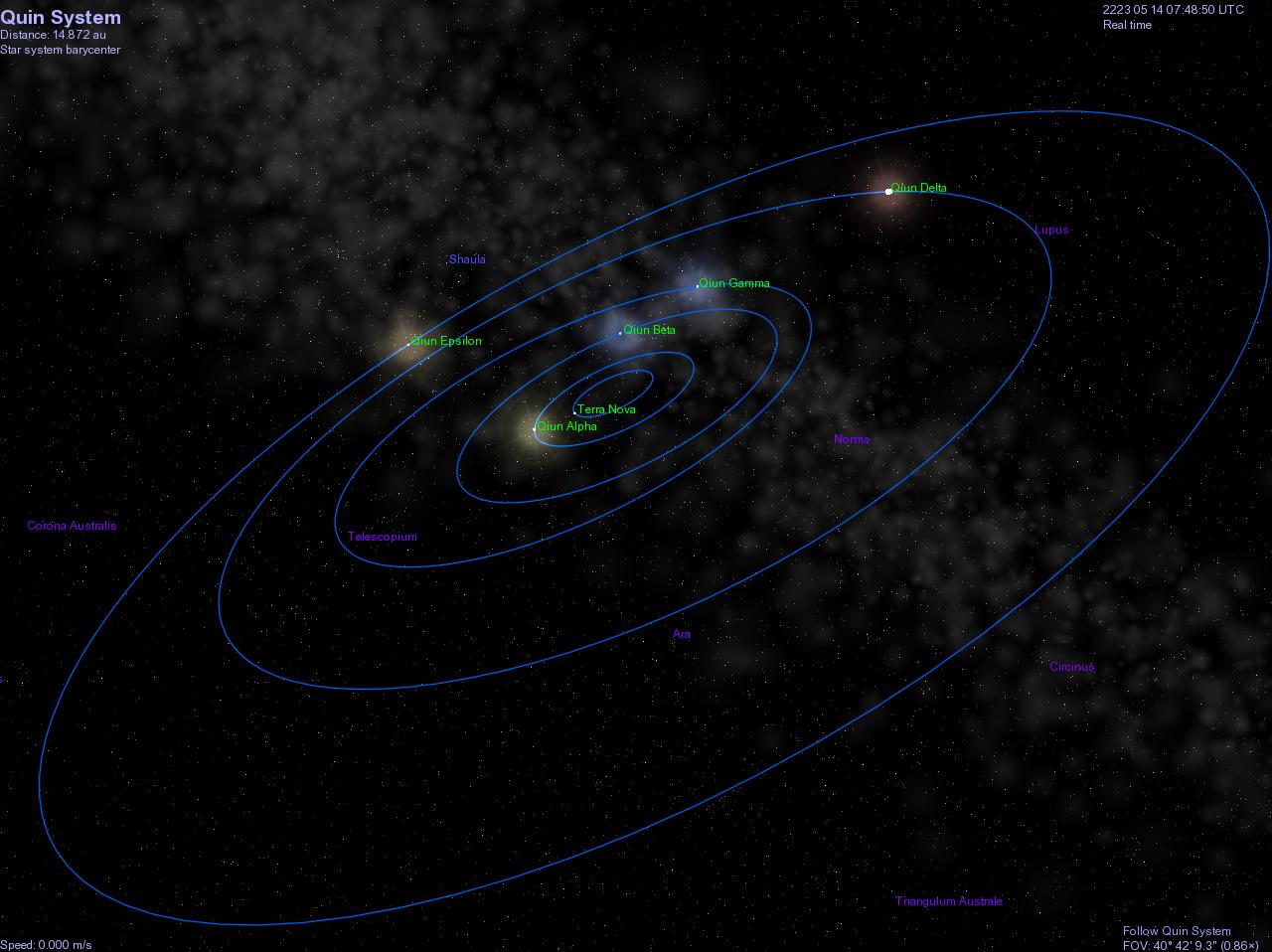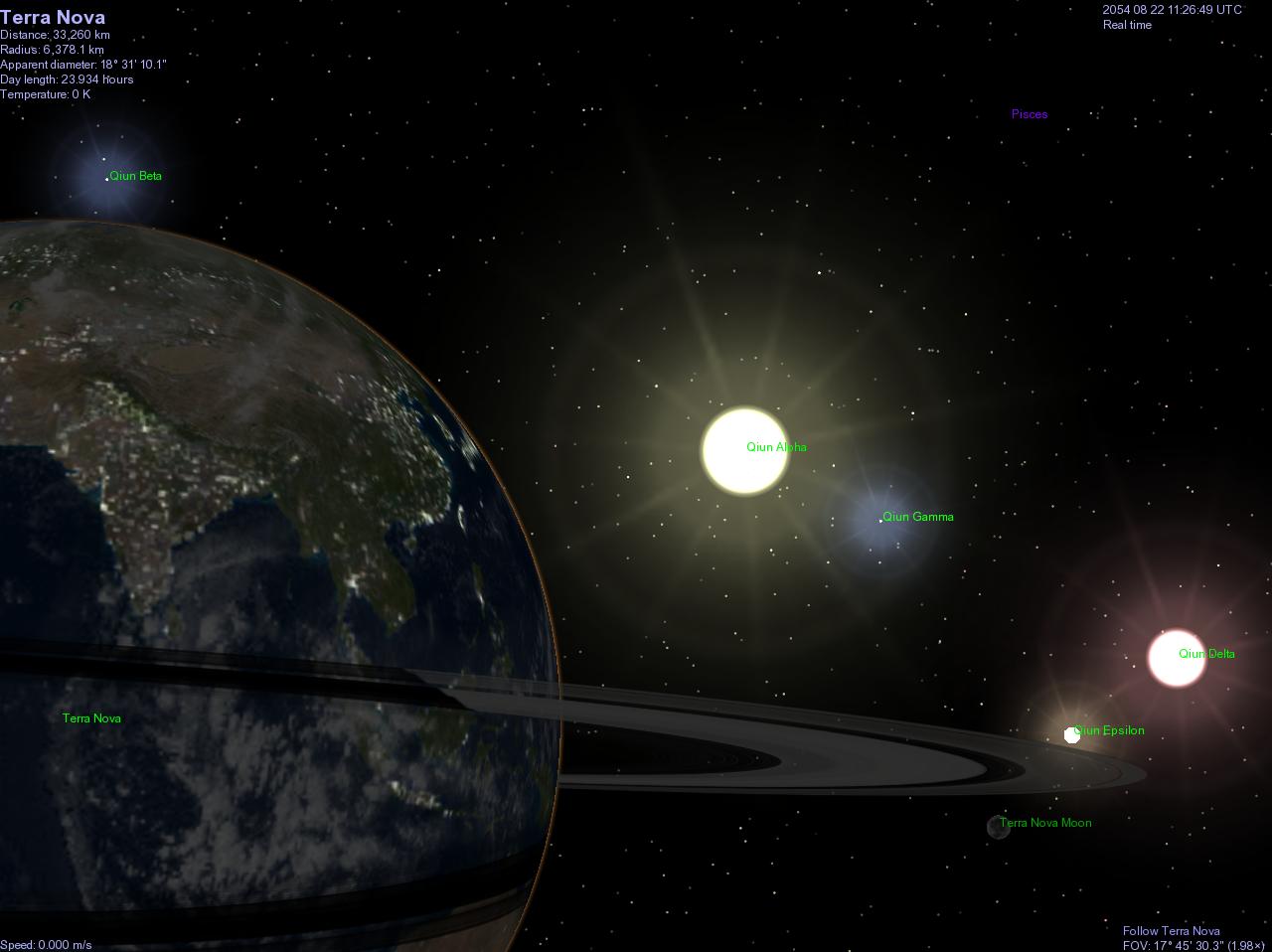I know you were just testing things out, but the orbital configuration is also rather unlikely. First, TN would be orbiting a star, not the barycentre. Second, it's likely that you'd have two binary pairs and one solo star. Pair up two stars, figure out where the barycentre is, then pair up another two stars and figure out its barycentre, then treat each barycentre as a a single star with a mass equal to the combined mass of its stars. Then find the barycentre that THOSE barycentres orbit, treat
that as a solo star with the mass of all four stars, and then find the real barycentre of the system which is the barycentre between THAT and the final solo star. I think. It's kinda complicated when you have that many stars

Also, IIRC I don't think Celestia can handle direct illumination from more than two stars?



